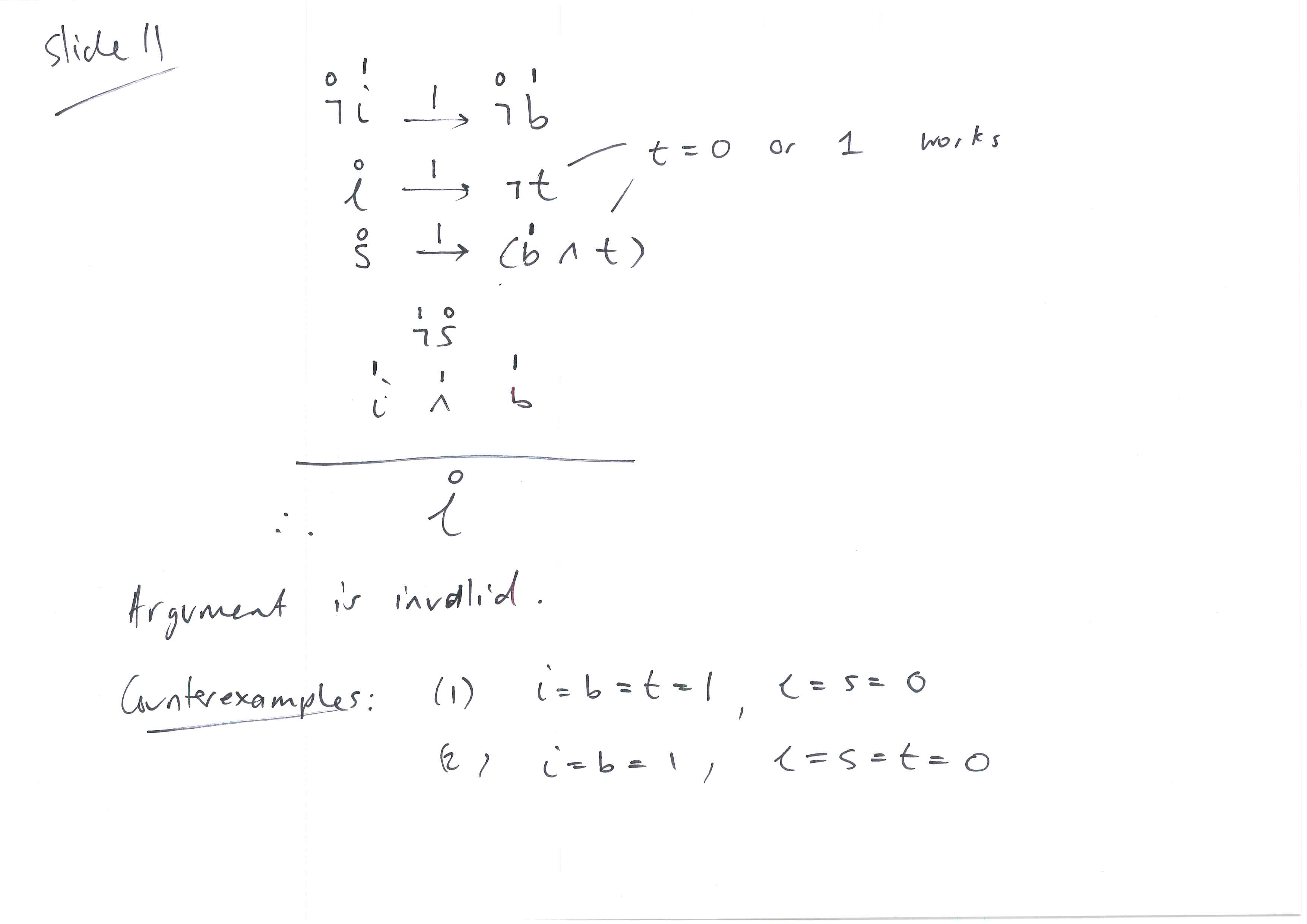And only the compound propositionp tautology
https://amyglen.wordpress.com
LECTURE 25
| Dr Amy Glen (Murdoch University) | MAS162 – Foundations of Discrete Mathematics | Lecture 25 | 1 |
|---|
| Dr Amy Glen (Murdoch University) | MAS162 – Foundations of Discrete Mathematics | Lecture 25 | 2 |
|---|
Recall: Logical Arguments/Inferences
Usual form: (H1 · H2 · · · · · Hn) ∆ C
A logical argument (or inference) asserts that the conjunction of n hypotheses H1, H2,
Hn
|
C |
|---|
Otherwise the inference is said to be invalid or a fallacy.
| Chapter 7: Propositional Logic | 4 |
|---|
Some valid inferences tend to arise very frequently, and it is convenient to use them over and over again instead of having to draw up a truth table each time we use them.
| Dr Amy Glen (Murdoch University) | MAS162 – Foundations of Discrete Mathematics | Lecture 25 | 4 |
|---|
If I study, then I will not fail mathematics.
If I do not use online social networking site(s), then I will study. But I failed mathematics.
| Dr Amy Glen (Murdoch University) | s | Lecture 25 | 5 | |||
|---|---|---|---|---|---|---|
|
||||||
| ) |
|
|||||
| MAS162 – Foundations of Discrete Mathematics | ||||||
Thus the logical implication
[(s æ ¬f) · (¬n æ s) · f] ∆ n
| Dr Amy Glen (Murdoch University) | MAS162 – Foundations of Discrete Mathematics | Lecture 25 | 6 |
|---|
is a tautology.
I But using the rules of inference takes some getting used to, and some students are frightened into always doing a truth table.
| Dr Amy Glen (Murdoch University) | MAS162 – Foundations of Discrete Mathematics | Lecture 25 | 7 |
|---|
|
|---|
I become weak if I do not eat meat.
|
9 | ||
|---|---|---|---|
h · [(w ‚ ¬i) æ ¬h] ∆ ¬(w ‚ ¬i) ∆ ¬(¬m)
|
(modus tollens) H4 · H3 | ||
|
|||
| (simplification) | |||
| (simplification) | |||
|
|||
| (double negation) | |||
| (double negation) | |||
| (4) · (5) |
| Chapter 7: Propositional Logic | 10 |
|---|
P := (H1 · H2 · · · · · Hn) æ C
is a tautology, i.e., the conclusion C is true whenever all of the hypothesis H1, H2, . . . , Hn are true.I So we can always determine the validity or otherwise of an inference simply by computing a truth table.
|
11 |
|---|
I Suppose you were not told in advance that a given inference is valid, but instead were asked to determine its validity.
I How would you go about doing this without computing the truth table?
| Chapter 7: Propositional Logic |
|
12 |
|---|
I Remember that we are trying to discover whether the compound proposition
P := (H1 · H2 · · · · · Hn) æ C
is a tautology or not.I On the other hand, if we fail to find the assignment of values, then we know that P must be a tautology, and so we can set about proving it.
|
13 |
|---|
| Chapter 7: Propositional Logic | 14 |
|---|
Example
|
|
|||||
|---|---|---|---|---|---|---|
| s | ||||||
| · | b | |||||
| ) | ¸ | 14 | ||||
| Dr Amy Glen (Murdoch University) | ||||||
Solution
1æ 1t 1t) |
|---|
So the inference is invalid, and a counterexample is i = b = t = 1 and¸ = s = 0.
| Chapter 7: Propositional Logic |
|
16 |
|---|
| Lecture 25 | 16 | ||
|---|---|---|---|
| Dr Amy Glen (Murdoch University) | MAS162 – Foundations of Discrete Mathematics | ||
Setting out your work
| Dr Amy Glen (Murdoch University) | MAS162 – Foundations of Discrete Mathematics | Lecture 25 | 18 |
|---|
Slides 8-9 (cont.)
Slide 15

